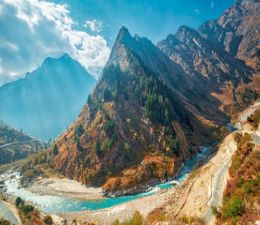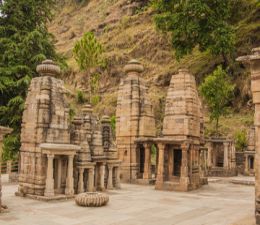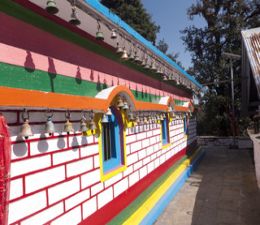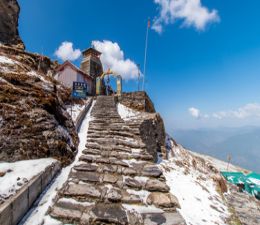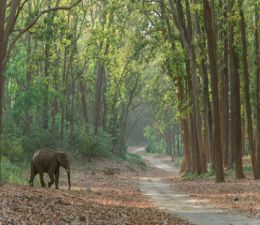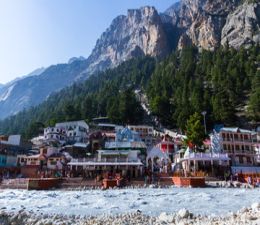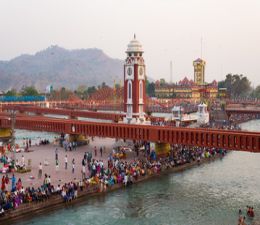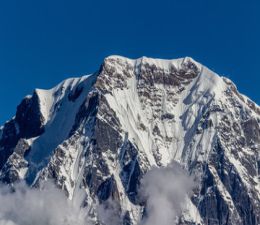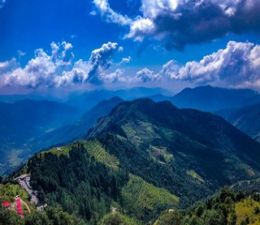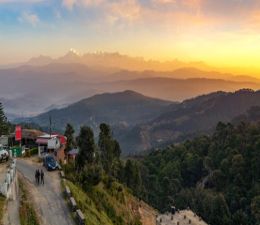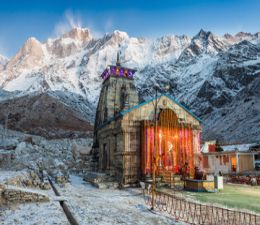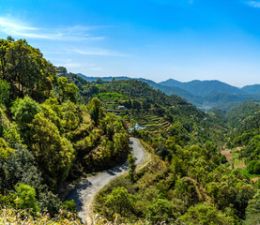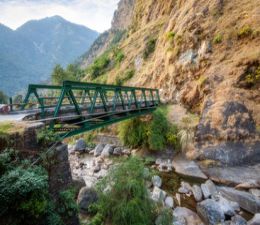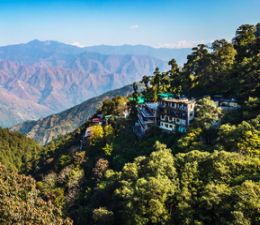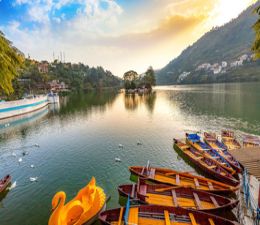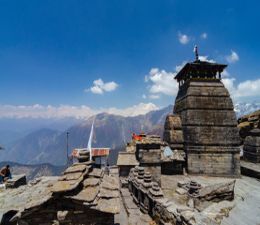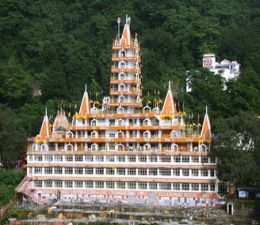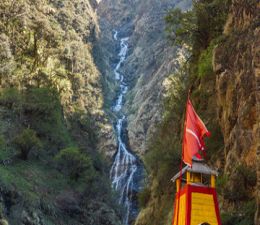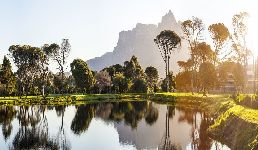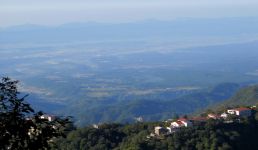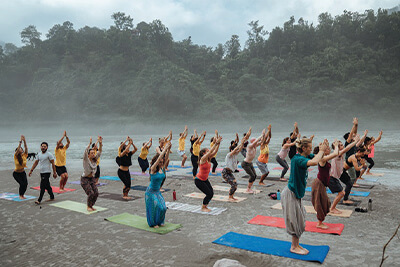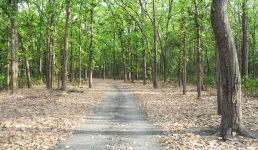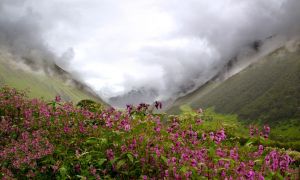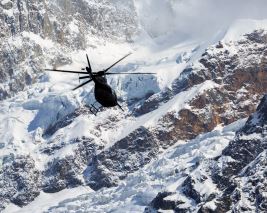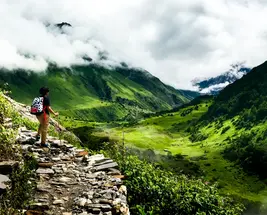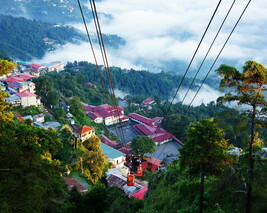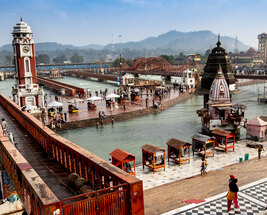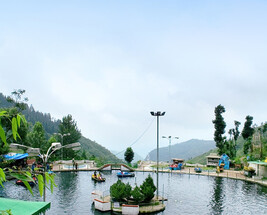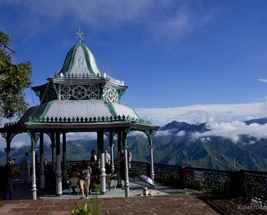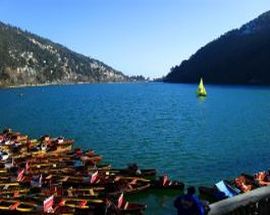Information about the Valley of Flowers:
The heavenly beauty of the Valley of Flowers region is renowned for its alpine meadows with vibrant flora and fauna. This pristine region is home to some of the Himalayan's rarest flora. It attracts many botanists, explorers, nature lovers and avid hikers. In addition to endangered species of medicinal plants, you can see different nuances of color in this beautiful valley.
If you're a summer person, the Valley of Flowers has a lot to offer. This is because it is adorned with vibrant flowers during the warmer months of the year.
The Valley of Flowers Tour in India is one of the most exotic places to visit. This is especially for you if you have a deep interest in nature and the landscapes and emotions that surround it. You want to spend time amidst misty breezes and authentic landscapes to refresh your spirit. It is a true beauty that captivates the viewer. It also helps them understand the concept of eternal beauty.
Botanists, environmentalists and mountaineers will enjoy the Valley of Flowers in India. There are endemic, unusual flower species, beautiful meadows and a diverse flora to discover. Enjoy the stunning sight of Valley of Flowers National Park's blaze of colour - blues, yellows, pinks and reds shimmering in the sunlight!
Along with its fragrances, the glacier at the valley’s end will provide a cool mountain breeze. You’d feel amazing as a result of it. As you enter the valley, the heady blend of fragrances of the flowers will hit you in waves, mesmerizing you with their perfection.
Location of 'Valley of Flowers:
The Valley of Flowers is a beautiful and enchanting place in Uttarakhand's Chamoli district. It is an Indian national park known for its rich flora and fauna. It is 3352 to 3658 meters above sea level. Every year numerous hikers and travellers visit the Valley of Flowers. It is a popular hiking destination! The national park is 87.50 square kilometres in size, 2 kilometres wide and 8 kilometres long.
The Flower Valley has snow-capped peaks of the Himalayas as a backdrop. The Flower Valley excursion offers peaceful natural beauty. Joshimath is a sacred hamlet near Haridwar. It serves as the starting point for the enticing journey down the valley.
The valley is believed to have been discovered in 1931. It was when three British climbers led by Frank S. Smythe got lost and chanced upon this spectacular valley. Attracted by the beauty of this place, they called it the Valley of Flowers.
Information about the blooming of flowers:
As the name suggests, the Valley of Flowers is a place where nature blooms. It offers a breathtaking experience. Exotic flowers (more than 600 species) such as orchids, poppies, primroses, marigolds, daisies and anemones are eye-catching. Subalpine birch and rhododendron forests cover part of the parking area. A hike into the gorge offers eye-catching sights such as cascading waterfalls and wild streams.
About the flowers
- Vajardanti (Potentilla Atrisanguinea)
- Pannir Soppu (Geranium Collinum)
- Jalkutre (Primula Denticulata)
- Balma-Jhar, Ban Ajwain (Thymus Linearis)
- Himalayan Venus (Cypripedium Himalaicum)
- Epilobium Latifolium
- Operating hours of Valley of Flowers National Park
Vajardanti (Potentilla Atrisanguinea):
The word atrisanguinea is made up of two words: Atri means very dark and sanguinea means blood red. The flower looks very beautiful when you see it live in the Valley of Flowers. You want to touch it, eat it or keep watching it, especially for its colour and velvety texture. It blooms from June to August. You can also find some flowers near the Pushpawati river bed until mid-September.
Pannir Soppu (Geranium Collinum):
It blooms from July to August. You can find some lonely flowering plants near the Pushpawati river bed even in September. It is not as lush as its other counterpart, Geranium wallichianum. The word Collinum refers to hills - the habitat of the plant.
Jalkutre (Primula Denticulata):
It blooms from May to June. Around the beginning of June, it can be seen near the entrance of Hana no Tani. After about 150m you will see a frozen river. The colonies of Primula denticulata are easy to spot on its shores.
The word primula comes from primus, meaning first. It refers to the first flowers to open in spring. It is used to treat diabetes and urinary tract disease.
Balma-Jhar, Ban Ajwain (Thymus Linearis):
It flowers from May to September. You will find Thymus Lineris among stones on your way to the Valley of Flowers. It is a mat-forming herb. It is heavily scented. It is responsible for beautiful pink spots in the Valley of Flowers. The whole plant is used to treat eye diseases, skin diseases, and stomach aches.
Himalayan Venus (Cypripedium Himalaicum):
This is a rare flower. It is found in Flower Valley. Although the flowering period is June to August, it is difficult to find them in the Valley of Flowers from the first to the third week of July. This is extremely rare. You need a guide who is knowledgeable about its location.
Epilobium Latifolium:
It flowers from July to October. You can easily see this flower on the banks of flowing water streams. The deeper you go into the Valley of Flowers, the greater the chances of getting its large colonies. It gives the Pushpawati riverbed its pink hue in July. These are some of the most seen flowers found in Valley in flowers. There are also many more flowers which you can spot and experience their beauty and fragrance.
Operating hours of Valley of Flowers National Park:
It operates Monday through Sunday from 8 a.m. to 5 p.m. You should head back around 1 p.m. to be back by 5 p.m. Although the valley is beautiful in May, June and September. But for the maximum number of flowers, July and August are the preferred months.
Activities to do in Valley of Flowers
- The Valley of Flowers Trek
- Hemkund Sahib
- Govindghat
- Mana
- Joshimath
The Valley of Flowers Trek:
The Valley of Flowers trek is one of the most famous treks in the Himalayas. There is a reason the Valley of Flowers is legendary. This is one of the oldest known treks in India. The Valley of Flowers is on the list of places hikers around the world want to visit. However, the hike is not as simple as it looks. It is a moderate trek with slightly longer trekking days. It has a steep climb to Hemkund Sahib. This requires endurance.
Hemkund Sahib:
Hemkund Sahib is a Gurudwara at an altitude of 4329 m. It is located in the Chamoli district of Uttarakhand near the Valley of Flowers. This sacred shrine is named after the glacial lake Hemkund. Hemkund borders Gurudwara. It means a lake of snow.
This Sikh pilgrimage site is dedicated to the 10th Sikh Guru, Sri Guru Govind Singh Ji (1666-1708). It is also mentioned in Dasam Granth. Dasam Granth is a work dedicated to Guruji himself. A small temple of Lakshman, the brother of Lord Rama, also adorns the shores of Lake Hemkund.
Govindghat:
Govindghat is the place where the journey to Hemkund Sahib begins. Mules and porters can be hired on-site. It also serves as a tourist parking lot. It is located between the Alaknanda and Lakshman Ganga rivers. It is about 22 km from Joshimath.
Mana:
Mana is a must-see when visiting the valley of flowers. It is located on the border with Tibet. It is one of India’s most beautiful villages. This village is inhabited by the Indo-Mongolian tribe. They are known as the Bhotia.
Joshimath:
Joshimath is one of the four Peethas founded by the great Adi Shankaracharya. This temple is situated at an altitude of 6150 feet in Uttarakhand. Joshimath is one of the sacred temples for Hindus. It is also the residence of Lord Badrinarayan.
Highlights of Valley of Flowers
Witnessing a valley covered in enormous varieties of flowers in all colours and tints of colour.
At 3,600m above sea level, the Valley of Flowers is a lively, colourful paradise where a wide variety of flowers thrive. The valley is surrounded by majestic snow-capped mountains, exquisite glaciers, waterfalls, streams, and fluffy clouds in the sky.
The Valley of Flowers National Park offers an amazing experience with the magnificent Himalayan peaks serving as the backdrop. The Valley of Flowers National Park is one of the two core zones of the Nanda Devi Biosphere Reserve. It is spread across an area of 87 sq. km in the Chamoli district. It is a UNESCO World Heritage Site. The second core zone is the Nanda Devi Valley of flowers National Park.
Three British mountaineers, commanded by Frank S. Smythe, are thought to have found the valley in 1931. They got lost in the forest and came upon this breathtaking valley. They gave it the name "Valley of Flowers".
A 17-kilometre hike leads to the Valley of Flowers from the village of Govindghat. The uphill journey from Govindghat to Ghangharia is surrounded by breathtaking waterfalls, forests, and the Himalayas. Ghangharia is about 14 km away from Govindghat.
A permit must be obtained from the forest department to enter Valley of Flowers Uttarakhand. There are no lodging options inside the valley. So, visitors are only permitted during the daytime during the three-day permit's validity period.
The pilgrims frequently use the trek path to get to the Sikh temple in Hemkund.
The Sri Hemkund Sahib Gurudwara is a revered Sikh shrine. It is only open for a few months. It is closed during winter due to severe snowfall. Hemkund Lake reflects the majestic mountains and entrancing glaciers.
A lovely location to visit is the Nanda Devi Park adjacent to the Valley of Flowers. Rare vegetation and a variety of endangered creatures can be found in this stunning sanctuary.
Entry fees to the Valley of Flowers
Destinations: Govindghat to Valley of Flowers
Distance /Altitude: Approx. 20 km trek/ 4,389 m for family and groups
Budget: INR 12,000 per person (excluding airfares)
It is not unusual for the valley to be temporarily closed for a day due to safety precautions.
Everyone who travels must complete the Hemkund Sahib Registration Form on the E-Portal.
Print the PDF after saving it.
Carry a photocopy of your photo ID card, and your COVID immunization certificate(s).
From Govindghat to Pulna, a distance of 4 km, the track can be driven on the way to Ghangaria. This shortened the distance from a few years ago to about 8 Km. It takes 20 kilometres to get from Pulna to Ghangaria. From Ghangaria, it is an 8-kilometre hike to the Valley of Flowers. It is a 12-kilometre trek back from Hemkund. A total of 40 km or so must be traversed inside the valley on paved paths and trails.
It is still quite an easy trek to Bhuydar village. And then it would be an hour of steep climbing from Bhyundar Bridge.
Horses are a quick way to get back if there is an emergency. A helipad at Ghangaria also offers flights to and from basecamp Govindghat.
Please take note that the helicopter will not fly when the weather is bad.
What you should carry:
- A raincoat, poncho, or other waterproof jacket is a must-have.
- Layer thermals, jackets, sweaters, hoodies, and whatever else will help you to stay warm.
- A backpack to store your belongings.
- A good pair of sports shoes with rubber soles so you have some traction on the route.
Weather in the Valley of Flowers
The best time to visit the Valley of Flowers is between July and August. The flowers are in full bloom during this time. The valley is open from June to October.
In the region of the national park, the seasonal bloom starts as early as June. Some flowers continue to bloom far into September. So, the time when you can see some blossoms lasts for around 16 weeks.
During the monsoon, the valley is covered in pink, white, blue, and violet hues (July-August). The valley is home to several common species, including Anemone, Bell Flower, Brahma Kamal, Blue Poppy, and Forget-Me-Not.
As the monsoon arrives fully, you will see a greater variety of species and flowers. The monsoon season begins in early July and lasts until the end of August. In this sense, any time in July or August is an excellent opportunity to visit the Valley of Flowers.
Interesting facts about the Valley of Flowers
- The Valley of Flowers is a part of the UNESCO World Network of Biosphere Reserves. It is a World Heritage Site.
- The Valley of Flowers - Myth and Reality and Ecology and Conservation of the Valley of Flowers National Park, Garhwal Himalaya are two publications on the valley. These were written by Professor Chandra Prakash Kala, a botanist at the Wildlife Institute of India.
- It is thought that Lord Hanuman took Sanjivani from the Valley of Flowers to Lord Lakshman to heal him of his illness.
- While returning from their excursion to Mount Kamet, three British mountaineers unintentionally came across it. They gave it the name.
- Botanist Joan Margaret Legge of the Royal Botanic Gardens lost her life in the valley in 1939 while collecting flowers on shaky slopes. At the location, her sister built a monument in her honour.
- It is home to unique alpine indigenous flowers, plants, and animals.
- Bhyundar Valley was the original name of the Valley of Flowers.
Flora & Fauna
Valley of Flowers National Park is nestled atop the tall Himalayan hills in the Chamoli region of Garhwal. It is always notable for its floral variety and unrivalled natural beauty. More than 500 kinds of vascular plants, 160 or more bird species, as well as various insects and mammals, call this biome home.
Nanda Devi National Park and Valley of Flowers National Park. are the West Himalayan landscapes with high altitudes.
This valley is home to more than 520 kinds of plants and flowers (recorded and identified), many of which are peculiar to this region.
Himalayan Rose (Rosa Macrophylla); Himalayan Honeysuckle (Leycesteria Formosa); Woolly Pearly Everlasting (Anaphalis Triplinervis) 14) Whorled Solomon’s Seal (Polygonatum verticillatum) 15) Devendra’s Balsam (Impatiens Devendrae) 16) Large Bellflower (Campanula Latifolia) 20) Himalayan Milk Vetch (Astragalus Himalayanus) 21) Himalayan Monkshood (Aconitum Ferox) 22) Purple Stalked Gentian (Gentiana Pedicellata) 23) Himalayan Thimbleweed (Anemone Obtusiloba).
Along with Nanda Devi National Park, this National Park makes the Himalayan regions full of the richest biological diversity. The blue sheep, brown bear, Asiatic black bear, civet cat, snow leopard, serow, and other mammals call this region home.
Monal, Snowcock, Vultures, Eagles, Laughing- thrushes, Pheasant, Warblers, Yuhina, Nuthatch, Partridge Honeyguide, Woodpeckers, Flycatchers, Magpies, Robins and Redstarts, Sunbirds, Accentors, Rosefinches, etc. are among the several species of birds. Numerous species of vibrant bees, moths, and butterflies can be seen.
Mythology related to the Valley of Flowers
To heal Lord Lakshman, it is thought that Lord Hanuman brought Sanjivani from The Valley of Flowers. This is Lord Indra's Nandan Kanan, according to Hindu mythology. The river Pushpawati's glacial action formed a high-altitude valley. It runs east to west beside the river. A legend states that the Pandavas gave the river the name Pushpawati. They did this after noticing flowers floating in its snow-fed waters.
When three British mountaineers Frank Smythe, Eric Shipton, and Romilly Holdsworth got lost in the forest and arrived at this valley instead of Mana village as they had originally intended. Thus, the valley's existence was known to the outside world.
How to reach the Valley of Flowers
Valley of Flowers is situated about 17 km from Govindghat. All you have to do is get to Govindghat and then navigate your way from there. From Govindghat, you can start a trek to Ghangaria. It is 13 km away. You have the option to hire a pony, a porter, or a helicopter, according to your liking and budget. However, a pony or a porter is more convenient. This is because helicopters may not be operational most of the time owing to poor weather conditions. After reaching Ghangaria, a 3-kilometre trek awaits you to the Valley of Flowers.
How to get to the Valley of Flowers by road
To get to the Valley of Flowers, first, you have to reach Govindghat. Govindghat is reachable smoothly via well-maintained roads. You can take a bus or hire a cab or taxi from Delhi or Haldwani.
To reach Govindghat from Delhi you have to take the following route:
- Delhi
- Haridwar
- Rishikesh
- Rudraprayag
- Joshimath
- Govindghat
To reach Govindghat from Haldwani Ranikhet, follow this route:
- Haldwani
- Ranikhet
- Karnaprayag
- Joshimath
- Govindghat
Once you reach Govindghat from either of the above routes, you can begin a trek or hire a pony, porter, or a helicopter to Ghangaria and trek for 3 kilometres to reach the Valley of Flowers.
Getting to the Valley of Flowers by Train
The nearest railway station to the Valley of Flowers is Rishikesh. From there, you can take a bus or cab to Govindghat. You can plan the onward trip to the Valley of Flowers.
Reaching Valley of Flowers by Helicopter
Although getting a flight route from Delhi is easier, the nearest airport to the Valley of Flowers is Jolly Grant Airport in Dehradun. From there, you can take a bus or cab to Govindghat and choose the onward route. However, the distance from the airport to Govindghat is 292 km. So, this route might not be highly recommended.
Places to eat in the Valley of Flowers
The first thing to keep in mind before starting your trip to the Valley of Flowers from Ghangaria is that you will not get any food stalls, shacks, or restaurants here. The area is comparatively isolated from other nearby areas like Hemkund Sahib and Ghangaria. So, it is advisable to carry your food and water.
The smartest thing to do would be to get your food and water packed from one of the dhabas in Ghangaria. The food will cost you approximately Rs. 200. You can also choose to pack some snacks like energy bars, chocolates and such.
However, do keep in mind to properly discard your waste rather than litter the beautiful Valley of Flowers.
Things You Should Know About the Trek to the Valley of Flowers
Visiting the Valley of Flowers when the flowers are in full bloom will make the visit worthwhile. May, June and September are beautiful times. But the best time to visit is July and August.
It is best to ask about the current weather conditions before planning your travel. This will help you to avoid any mishaps. In the monsoons, the weather conditions get worse so it is best to be informed.
What to carry with you for the trek
Before you plan a trek to the Valley of Flowers, make sure you are properly packed and prepared. Here is a list of things that you should definitely pack before you start your trek:
- Lightweight jacket or windcheater of good quality to combat the cold
- A couple of t-shirts, preferably one half and one full
- Thermal clothing
- Two lightweight trousers or tights. These should be comfortable for trekking
- One pair of shorts
- Trekking boots with good quality floaters for the trek, along with waterproof shoes
- Two lightweight woollen or fleece jumpers
- Lightweight, foldable umbrella
- A woollen scarf, beanie or hat
- A small torch with extra batteries
- Water bottle, hand towel and basic toiletries
- Sun shades or glasses
- A camera, a notebook and a pen for your luggage
- Small backpack for water bottles, food, and other items.
- Basic medicines like bandages, antibiotics, and medicines for headaches, fever, vomiting and cold
- Dry fruits like almonds, cashew, etc.
- Energy bars
Places to stay in the Valley of Flowers
It is not allowed to stay overnight in the Valley of Flowers. But you can find various lodging options at Govindghat or Ghangaria.
- Hotel Yoga: 12km from the Valley of Flowers
- Amritara the Avadh: 12 km from the Valley of Flowers National Park
- Bhajan Ashram Badrinath: 12 km from the Valley of Flowers National Park
- Hotel Himgiri: 12 km from the Valley of Flowers National Park
- Hotel Vasudeva Inn: 13 km from the Valley of Flowers National Park
- The Tattva Resort: 21 km from the Valley of Flowers National Park
- Mount View Annexy: 21 km from the Valley of Flowers National Park
- The Sleeping Beauty Hotel by the Vedix Yatra: 21 km from the Valley of Flowers National Park
- Cliff Top Club: 21 km from the Valley of Flowers National Park
- Himalayan High, Auli, by Himalayan Eco Lodges: 22 km from the Valley of Flowers National Park
- Auli Resort: 23 km from the Valley of Flowers National Park
- Casa Himalaya: 23 km from the Valley of Flowers National Park
- Mountain Rover Auli: 23 km from the Valley of Flowers National Park
- The Snow City: 23 km from the Valley of Flowers National Park
Reasons why you should visit the Valley of Flowers
There are various reasons why you must visit the Valley of Flowers at least once in your lifetime. Some of them are listed below:
- World Heritage Site: It has been designated as a World Heritage Site by UNESCO in 2005. It is a part of Nanda Devi National Park. It stretches over a land of 80.75 km. The Valley of Flowers is a 15-kilometre-long trek. Pilgrims and visitors prefer to visit here to spend some quiet, meditative time.
- Unique Flora: When you visit the Valley of Flowers, you will be able to see some flora. These have been marked as endangered species according to the UNESCO website. Here you will find a larger number of medicinal plants as compared to the Himalayan region.
- Most Searched for Place: The Valley of Flowers comes out in the maximum of searches for a tourist attraction in Uttarakhand when it comes to a place for meditative purposes.
- Rare and endangered birds and animals: Visit the Valley of Flowers and you will get to see rare species of birds and animals like The Himalayan Monal, Himalayan Black Bears, Musk Deer, Red Fox, Blue Sheep, Snow leopard, and more.
- Untouched yet well-manicured: The flora in the Valley of Flowers is left untouched but they look perfectly in shape and well-manicured just like a properly maintained garden. Of course, there are strict rules to not touch the outgrowth when visitors visit this area.
- A delight for trekkers during monsoons: Not every trek is open during monsoons. However, the Valley of Flowers is an exception. It is one of the few places which is a major tourist attraction, especially during the monsoons. It is because the rarest and most beautiful flowers bloom here around this time. Another added factor is the ultimate beauty and sublime greenery of the region.
- Hemkund Sahib: Hemkund Sahib is known to be one of the most resplendent and beautiful Gurudwaras in the world. As Guru Nanak Dev Ji said, “Tell your troubles to the one who is the source of all comfort”. Plan a trip to the Valley of Flowers and visit Hemkund Sahib.
Here you will be able to taste the best Gurudwara Langar and deliciously soul-filling Guru Prasad. Rest here for a bit to give your aching and sore muscles some respite from the long trek. Take a dip in the holy water to rejuvenate your mind and body.
- A heaven for photographers: If you love photography, Valley of Flowers is going to be an absolute treat for you! Get your Go Pros and DSLRs to check some of the best shots here. The beauty, greenery and grace of the land are incomparable. Just like out of a fairy tale, capture the beauty of this place with your camera. Take it back to cherish at home.
- Inhale pure oxygen: Looking for a place where you can get away from the hustle, bustle and pollution of the busy city? Take a trek up to the Valley of Flowers and take in the purest of oxygen.
- Tourism income for villagers: This place is a source of income for the Pulna and Bhyundar villages. So if you visit the Valley of Flowers, you are actually promoting their livelihood.
All in all, the Valley of Flowers is one of the most isolated and green tourist attractions. Here, you can find peace, tranquillity and pure oxygen to rejuvenate your mind, body and soul. Visit here and see if you are lucky enough to see the Brahma Kamal flower. This Brahma Kamal flower is quite a rare find in itself.

